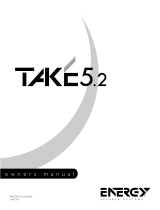
TCNM-ACBB1 Installation Manual
5 p/n 174477 Rev. A
Power Switch ON/OFF Positions and Connections
Vdc is electrically connected to +V, just as GND is electrically connected
to -V. This is useful for supplying external trigger, inputs and outputs
from the TCNM-A CBB1 power source, however +V and -V signals should
not be used as power supply inputs to the TCNM-ACBB1.
The power supply must be between 10 and 30 Vdc only.
To avoid electromagnetic interference:
- Connect TCNM-ACBB1 Protection Earth (Earth) to a good earth
ground.
- Connect the reading device chassis to earth ground through the
jumper, (default setting).
- Connect the Network Cable Shield (Shield) to Filtered Earth through
the jumper (default setting).
System Wiring
The connection and wiring procedure for TCNM-ACBB1 is described as follows:
1) Open the TCNM-ACBB1 by unscrewing the two cover screws.
2) Verify that the TCNM-ACBB1 power switch is off.
3) Unscrew the compression connectors and pass all the system cables through them into the
TCNM-ACBB1 housing.
4) To connect the power and input/output signals:
a. Prepare the individual wires of the system cables by stripping the insulation back
approximately 1 cm.
b. Using a device such as a screwdriver, push down on the lever directly next to the clamp.
c. Insert the wire into the clamp and release the lever.
The wire will now be held in the spring clamp.
5) Tighten the compression connector nuts so that the internal glands seal around the cables.

















